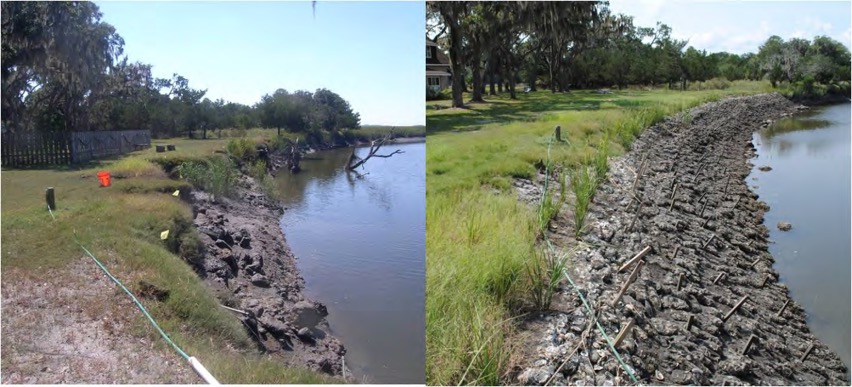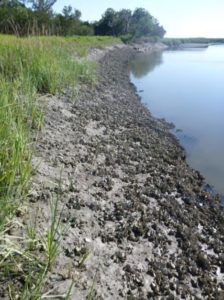
Ashantilly Site Pre-Living Shoreline Construction 2009 (Left ) and Post-Living Shoreline Construction 2010 (Right)
“A living shoreline is a sloped, erosion control technique built to protect an embankment which: mimics natural habitat; provides increased opportunities for species diversity and productivity; and can serve to improve water quality and the ecological integrity of the area.
…
Through the promotion of native species and habitats, living shorelines can preserve and enhance the ecological integrity of the coastal environment.” -GADNR 2013

Ashantily Living Shorelines Site 2013
Erosion is a natural process within salt marshes but can cause issues for property management and threaten infrastructure. It also can be made worse when marsh vegetation is degraded, caused by an absence of root systems to provide structure for the soils.
Oyster reefs provide a natural shoreline that assists in soil stabilization while also providing essential habitat and services. At the turn of the last century, Georgia’s estuaries provided the U.S. with the majority of its canned oysters. Overharvesting and not returning the shells back to the water decimated the oyster populations. Thus, restoring these reefs returns not only provides shoreline stabilization but also returns a keystone species to the ecosystem.
The first demonstration living shorelines in Georgia were constructed on Sapelo Island in 2010 – 2011 at two sites, Ashantilly and Long Tabby, and on Little St. Simons Island in 2013. The lessons learned from the demonstration sites have been applied to three additional sites on the Georgia coast on St. Simon’s Island, Skiddaway Island and Tybee Island.
A report compiled by the Georgia DNR Coastal Resource Division can be found here.
